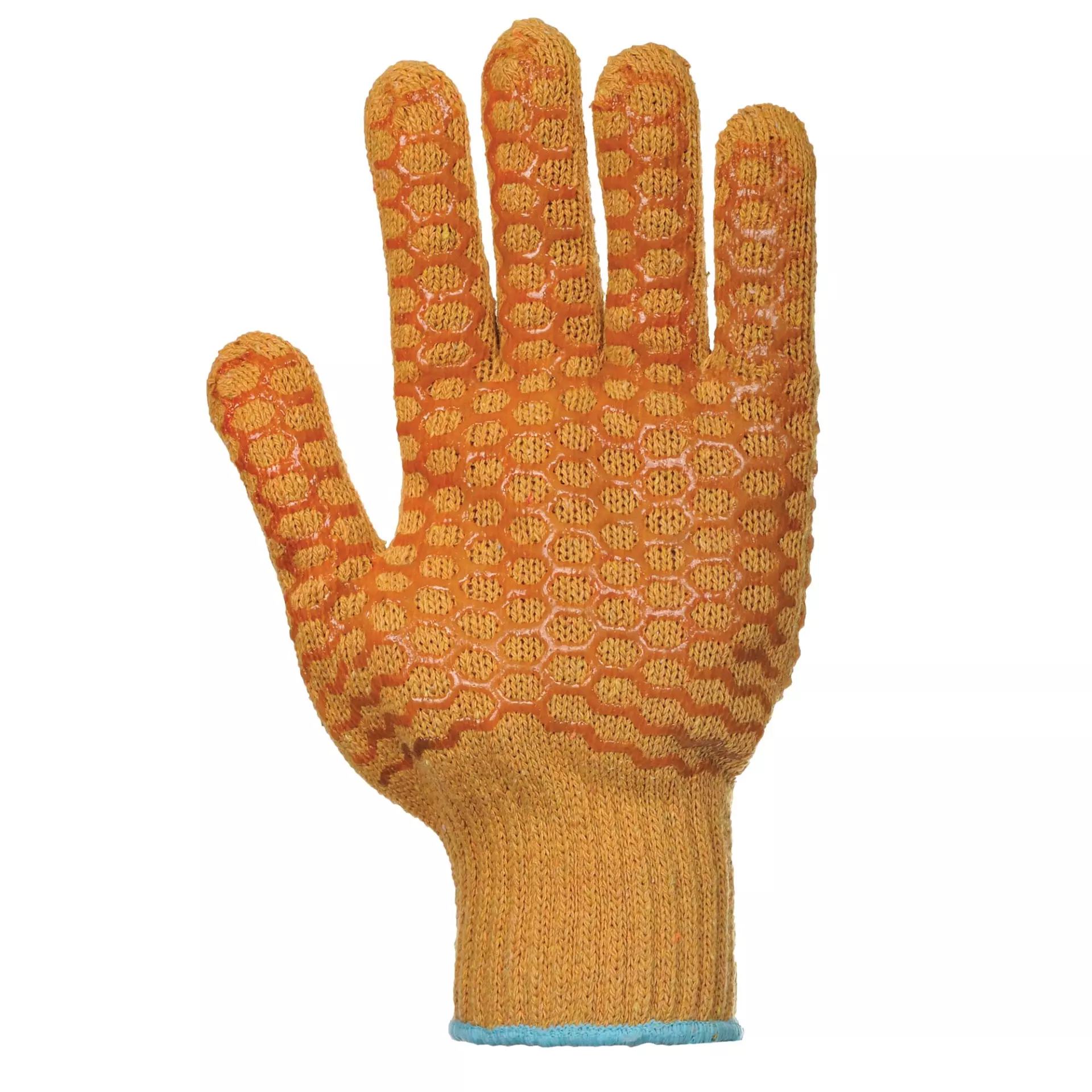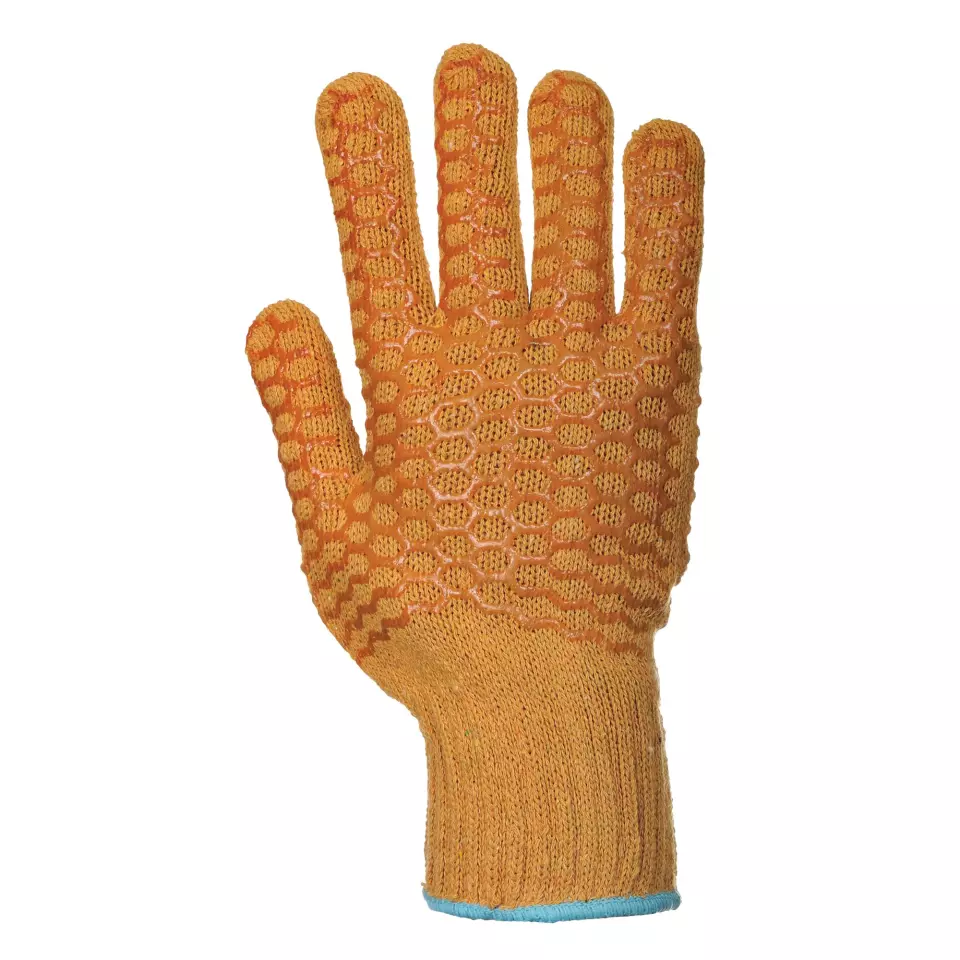


Features You'll Love

Grip Finish · Textured
The surface texture or coating on the palm and fingers that determines how securely the gloves can grip tools, materials, and surfaces during work tasks.
Portwest
Criss Cross Glove, Orange, 12 pairs
Criss Cross Glove, Orange, 12 pairs
5 / 5
31,87 €
Price per 12 pairs
2,66 € / pair
Choose size
Out of stock
Shipping fee is 7,95 € for orders under 80,00 €
Features You'll Love

Grip Finish · Textured
The surface texture or coating on the palm and fingers that determines how securely the gloves can grip tools, materials, and surfaces during work tasks.
Product description
These work gloves feature a reversible PVC grip coating that extends product life and provides excellent value for general handling applications. The robust 7-gauge liner construction combines with extremely flexible PVC coating and textured grip pattern to deliver reliable performance in dry working conditions. Designed for ambidextrous use, these gloves accommodate both left and right-handed users while maintaining high dexterity ratings.
Product Features:
- Reversible PVC grip coating for extended life
- Textured pattern for enhanced grip
- Ambidextrous design suitable for left and right-handed users
- Knitted cuff for comfort and warmth
- Breathable seamless liner
Technical Details:
- Robust 7-gauge liner construction
- Extremely flexible PVC coating
- Performs well in dry conditions
- CE certified
- Dexterity rating: Level 5
Recommended Applications:
- General handling work duties
Standards:
- EN ISO 21420:2020
- EN 388:2016 + A1:2018 (1141X)